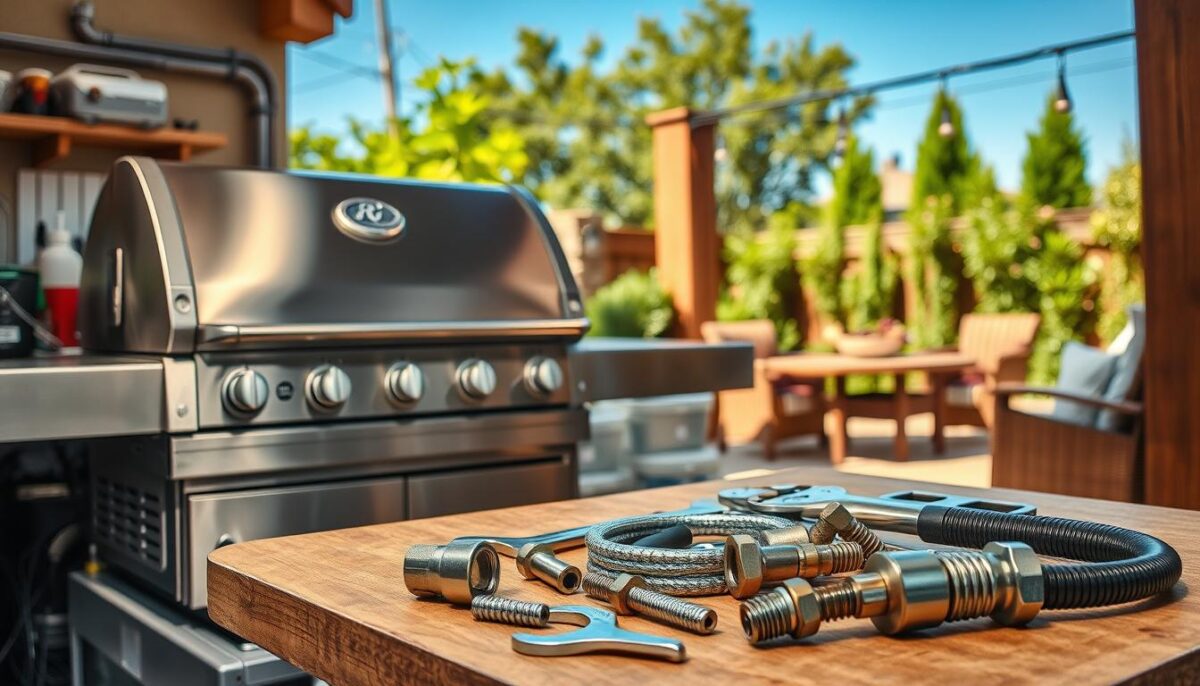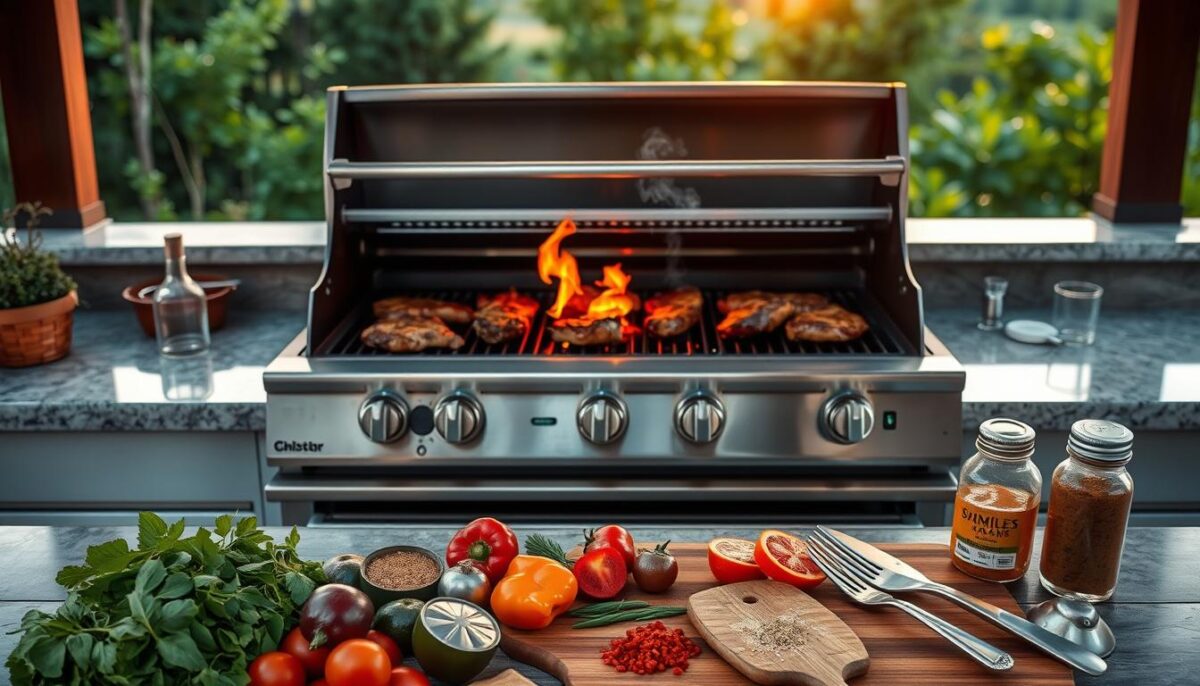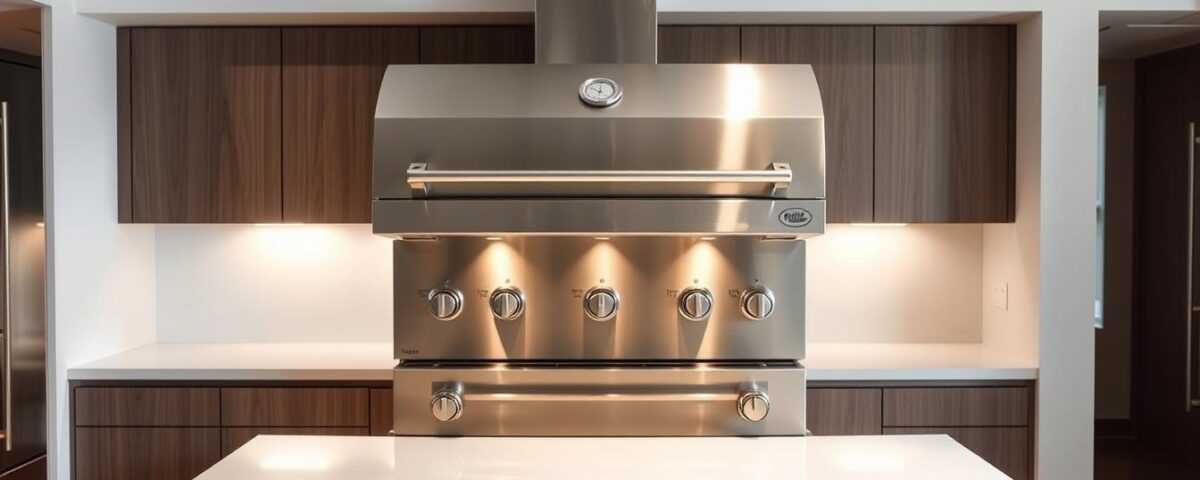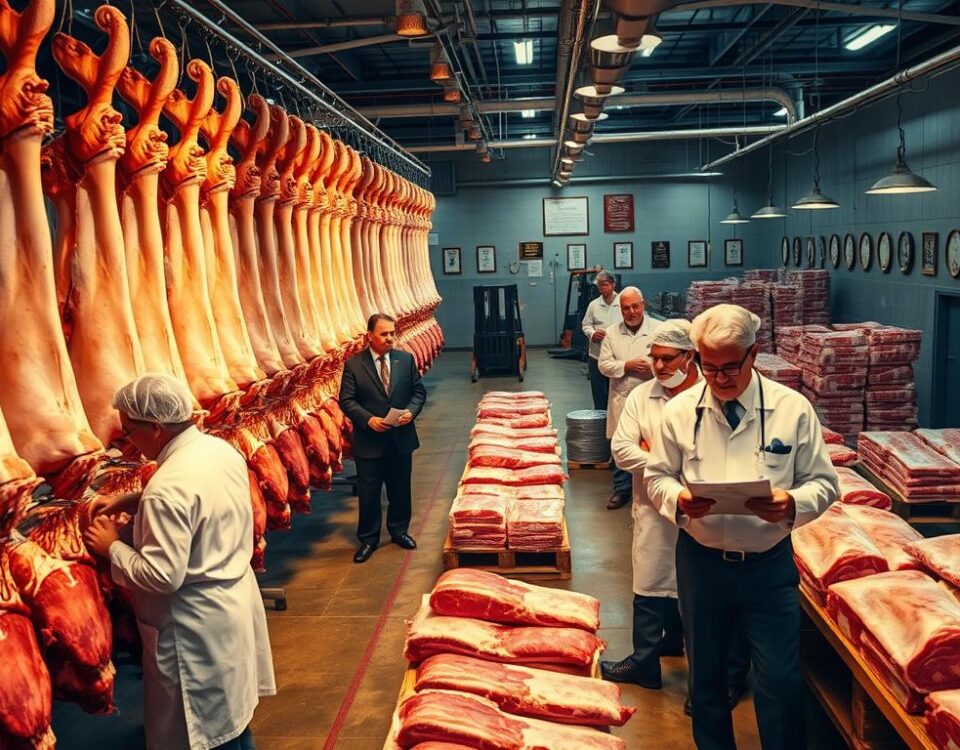
Top 5 Commercial Kitchen Tools That Save Time and Boost Efficiency
September 3, 2025
Hobart vs Globe: Which Commercial Mixer Is Right for You?
September 4, 2025As a restaurant owner, you’re no stranger to the sizzling sounds and savory aromas of a busy kitchen. But have you ever stopped to consider the cost of keeping those grills fired up? The choice between gas and electric grills can significantly impact your bottom line.
Did you know that the average commercial kitchen spends thousands on energy costs each year? The right grill can help reduce those expenses. Gas grills offer continuous temperature control and a richer flavor, while electric grills provide intense radiant heat and energy efficiency.
So, which type of grill is the most cost-effective for your restaurant? Let’s dive into the details to find out.
Key Takeaways
- Understand the differences between gas and electric grills for commercial kitchens.
- Learn how to reduce daily operational costs with the right grill choice.
- Discover how grill selection affects food quality and kitchen workflow.
- Analyze the financial implications of gas vs electric grills.
- Determine the most cost-effective option based on your restaurant’s needs.
Understanding Gas and Electric Grills for Commercial Kitchens
For commercial kitchens, deciding on gas versus electric grills is a fundamental choice that influences operational expenses and efficiency. The type of grill selected affects not only the kitchen’s workflow but also the quality of food served.
Basic Differences in Technology and Operation
Gas grills operate using natural gas or propane, offering a different cooking experience compared to electric grills, which rely on electricity. Gas grills are known for their quick heating and precise temperature control, while electric grills provide a more straightforward, plug-and-play solution.
Why This Choice Matters for Your Restaurant’s Bottom Line
The cost of electricity is generally higher than the cost of natural gas, with regional variations. For instance, on the west coast, electricity can be 7 times the cost of natural gas, while on the east coast, it’s around 4 times. This disparity significantly impacts a restaurant’s operational costs.
| Region | Electricity Cost vs Natural Gas |
|---|---|
| West Coast | 7X |
| East Coast | 4X |
Understanding these differences is crucial for making an informed decision that aligns with your restaurant’s financial and operational goals.
Initial Investment: Purchase and Installation Costs
Choosing between a gas and electric grill for your restaurant involves considering the initial purchase and installation costs. The total upfront expense can be substantial, and understanding the components of this cost is crucial for making an informed decision.
Upfront Costs of Gas Grills
The purchase price of gas grills can vary significantly based on size, features, and brand. High-end models with advanced features like multiple burners and precise temperature control tend to be more expensive. On average, a commercial gas grill can cost anywhere from a few hundred to several thousand dollars.
Upfront Costs of Electric Grills
Electric grills also vary in price, with factors such as size, heating element quality, and control features influencing the cost. Generally, electric grills tend to be less expensive than their gas counterparts, with prices ranging from a couple of hundred to a few thousand dollars.
Installation Requirements and Expenses
Installation costs for both gas and electric grills can be significant. For gas grills, a dedicated gas line and ventilation system are required, which can involve additional expenses for permits, labor, and materials. Electric grills require dedicated circuits and may necessitate panel upgrades, adding to the upfront cost. The complexity of the installation, including any necessary modifications to your kitchen’s infrastructure, will impact the overall expense.

Operational Expenses: Fuel vs Electricity
The choice between gas and electric grills extends beyond initial purchase costs to include ongoing operational expenses that can greatly affect your restaurant’s profitability. To make an informed decision, it’s essential to analyze the costs associated with each type of grill.
Analyzing Gas Consumption and Costs
Gas grills operate using natural gas or propane. The cost of gas consumption depends on the grill’s BTU rating and usage patterns. On average, a commercial gas grill can consume between 10,000 to 20,000 BTUs per hour. To estimate costs, you’ll need to check your local natural gas rates, which can vary significantly by region.
Understanding Electric Usage and Utility Bills
Electric grills, on the other hand, are powered by electricity. Their energy consumption is measured in kilowatt-hours (kWh). The cost of electricity varies widely across different regions, with commercial rates often being higher than residential rates. To calculate the operational cost of an electric grill, you’ll need to consider both the grill’s power rating and your local electricity rates.
Regional Cost Variations Across the United States
The cost comparison between gas and electricity varies significantly by region. For instance, on the West Coast, electricity can be seven times the cost of natural gas, while on the East Coast, it’s typically four times the cost.
This disparity is due to differences in local utility infrastructures and energy sources. Understanding these regional variations is crucial for estimating your grill’s operational costs accurately.
By analyzing these factors, you can make a more informed decision about whether a gas or electric grill is more cost-effective for your restaurant.
Performance Factors That Impact Costs
When evaluating gas and electric grills for your commercial kitchen, several performance factors come into play that can significantly impact your operating costs. These factors not only affect how efficiently your kitchen operates but also influence staff comfort, food quality, and overall kitchen environment.
Heating Speed and Temperature Control
Gas grills are known for their quick heating and precise temperature control. They can reach high temperatures rapidly, which is ideal for searing meat. In contrast, electric grills, while improving in heating speed, often can’t match the responsiveness of gas grills. “The ability to control temperature precisely is crucial for achieving consistent food quality,” as noted by chefs in high-end restaurants.
Energy Efficiency Comparison
Electric grills generally offer higher energy efficiency compared to gas grills. They convert a larger percentage of the input energy into usable heat for cooking. However, gas grills produce more ambient heat in the kitchen, potentially increasing HVAC costs, especially in warmer climates. A study found that kitchen HVAC costs can be up to 20% higher with gas grills due to the excess heat.
Impact on Kitchen Environment and HVAC Costs
The excess heat from gas grills not only affects HVAC costs but also impacts staff comfort and productivity. Electric grills, producing less ambient heat, can contribute to a more comfortable kitchen environment. Modern ventilation systems can mitigate some of these differences, but the choice between gas and electric grills remains significant for kitchen environment and HVAC costs.
Gas vs Electric Grill for Restaurants: Long-Term Cost Analysis
When evaluating grills for commercial kitchens, understanding the long-term costs is crucial for maintaining profitability. The decision between gas and electric grills involves more than just the initial purchase price; it requires a comprehensive analysis of lifespan, maintenance, and repair costs.
Lifespan and Durability Expectations
The durability of a grill directly impacts its long-term cost-effectiveness. Gas grills are often praised for their robust construction and ability to withstand high-volume cooking. In contrast, electric grills, while generally reliable, may have a shorter lifespan due to the potential for electronic component failure. Typically, a well-maintained gas grill can last 10-15 years, whereas an electric grill’s lifespan ranges from 7-12 years.
Maintenance Requirements and Expenses
Regular maintenance is essential for both types of grills. Gas grills require more frequent cleaning of burners and flavor bars, and their ignitions need regular checks. Electric grills, on the other hand, have more electronic components that can be susceptible to heat and moisture damage, potentially leading to higher maintenance costs. For instance, controllers in electric grills can fail due to compromised ignition settings, rendering the grill inoperable.

Replacement Parts and Repair Considerations
Replacement parts and repair costs vary between gas and electric grills. Gas grills often require replacement of parts like burners and ignitions, which can be relatively inexpensive. Electric grills, however, may need specialized repairs for their electronic components, potentially increasing labor costs. The availability and cost of replacement parts, as well as the complexity of repairs, play a significant role in determining the long-term cost-effectiveness of a grill. For example, a griddle surface on an electric grill may need to be replaced more frequently than on a gas grill, affecting overall costs.
Menu Considerations and Food Quality Impact
When it comes to choosing between gas and electric grills for your restaurant, the impact on your menu and food quality cannot be overstated. The type of grill you select can significantly influence the flavor profile and overall quality of your dishes.
Cooking Performance for Different Menu Items
Gas grills offer the versatility to cook a wide range of menu items, from tortillas to peppers to meat, with a distinct flame-kissed flavor that many chefs and customers love. In contrast, electric grills provide a clean cooking profile that can be beneficial for certain menu items that require precise temperature control. The choice between gas and electric grills should be guided by the specific cooking needs of your menu.

Flavor Differences and Customer Satisfaction
The flavor differences between gas and electric grills can have a significant impact on customer satisfaction. While gas grills provide a more authentic flavor, electric grills can still achieve high-quality flavors with the right accessories, such as smoking chips and smoker attachments. Understanding these differences is crucial for developing a menu that meets customer expectations and enhances your restaurant’s reputation.
By considering the cooking performance and flavor profiles of gas and electric grills, you can make an informed decision that aligns with your menu and quality standards, ultimately leading to higher customer satisfaction.
Conclusion: Making the Cost-Effective Choice for Your Restaurant
The decision between gas and electric grills can significantly impact your restaurant’s bottom line. To make an informed choice, consider both the initial investment and long-term operational costs. Gas grills typically offer lower operating costs, especially in regions where natural gas is cheaper than electricity. However, the initial purchase and installation costs, as well as maintenance expenses, should also be factored into your decision.
When evaluating your options, consider your restaurant’s specific needs, including menu type, volume, and budget constraints. Regional factors like utility costs and local regulations can also influence your decision. To determine the most cost-effective choice, calculate the total cost of ownership over a 5-10 year period for both gas and electric grills. By weighing these factors, you can make a decision that aligns with your restaurant’s operational style and financial goals.
FAQ
What are the main differences in operating costs between gas and electric grills?
The main difference lies in the fuel source: gas grills use propane or natural gas, while electric grills use electricity. The cost of these fuels varies by region, impacting overall operating expenses.
How do I determine the most cost-effective grill type for my restaurant?
Consider factors like your menu, kitchen size, and local energy costs. Gas grills offer precise temperature control and can be more cost-effective in the long run, while electric grills are often less expensive to purchase upfront.
What are the installation requirements and associated expenses for gas grills?
Gas grills require a natural gas line or propane tank installation, which can add to upfront costs. Ensure you hire a professional to avoid safety hazards and comply with local regulations.
How do heating speed and temperature control impact cooking performance?
Gas grills generally offer faster heating and more precise temperature control, allowing for a wider range of cooking techniques and better food quality.
Are there any regional variations in energy costs that I should consider?
Yes, energy costs vary across the United States. For example, areas with high electricity costs may benefit from gas grills, while regions with low electricity costs might favor electric grills.
What are the maintenance requirements for gas and electric grills?
Both types require regular cleaning, but gas grills need more frequent maintenance, such as checking burners and igniter systems, to ensure safe operation.
How do gas and electric grills affect the kitchen environment and HVAC costs?
Gas grills produce more heat and can increase kitchen temperatures, potentially raising HVAC costs. Electric grills, on the other hand, produce less heat and may be a better choice for kitchens with limited ventilation.



